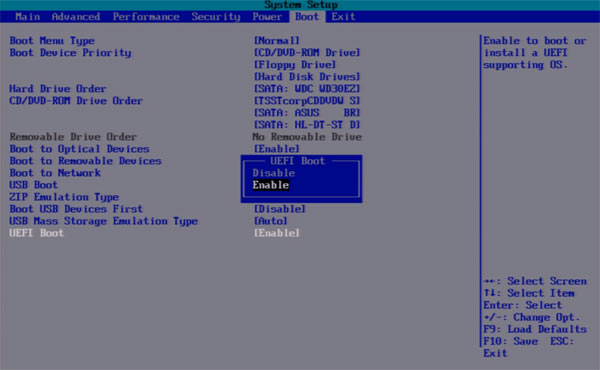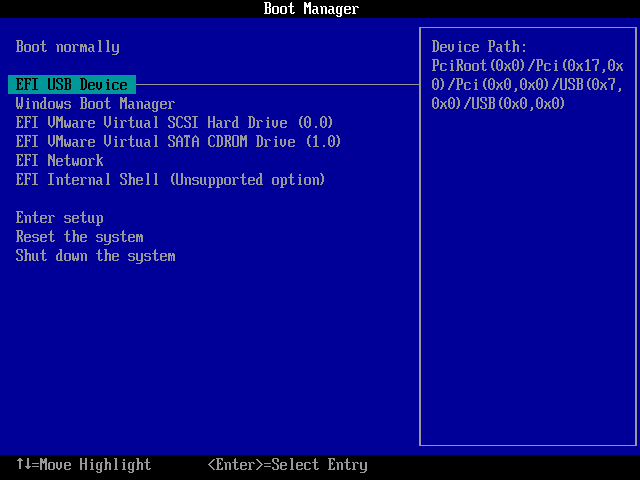


After clicking "Yes", WinToUSB begins creating the Winddows installation USB drive. After clicking "Proceed", a pop-up will appear asking you if you want to format it to continue, click "Yes" if you are sure. MBR for BIOS and UEFI: This option creates a Windows installation USB that can be booted on both BIOS and UEFI computers.GPT for UEFI: This option creates a Windows installation USB that can only be booted on UEFI computers.MBR for BIOS: This option creates a Windows installation USB that can only be booted on BIOS computers.Select "MBR for BIOS and UEFI" partition scheme, then click "Proceed". If the drive is not correctly recognized by Hasleo WinToUSB, you can click the button for the program to recognize the drive.

Click "Select destination drive" and select the destination drive from the pop-up drive list.
Wintousb uefi boot windows 10#
Click "Select installation source", then click "Browse image file" and then select the Windows 10 installation ISO file from the open dialog box as installation source. Connect the the USB drive to the computer, run Hasleo WinToUSB and then click "Windows Installation USB".
Wintousb uefi boot install#
Download and install Hasleo WinToUSB, and then download Windows 10 installation ISO file, you can also download Windows 10 installation ISO file with Windows installation ISO download feature built into Hasleo WinToUSB. Tutorial to create a bootable Windows 10 installation USB that supports UEFI.
Wintousb uefi boot how to#
Here, we mainly discuss how to use Hasleo WinToUSB to create a bootable Windows 10 installation USB drive to install Windows 10 on both Traditional BIOS and UEFI computers. Hasleo WinToUSB is a tool that is primarily used to create bootable Windows USB drive, not only you can use it to create a Windows To Go USB drive, but also you can use it to create a bootable Windows installation USB drive. There are many tools available today that support creating bootable Windows USB drive, and here we recommend Hasleo WinToUSB to you. We know that computers shipped in recent years usually don't contain a CD/DVD drive, so we usually have to create a Windows installation USB drive to install Windows 10. Even if Windows 10 is very stable, there are times when we need to reinstall it, such as virus damage that causes Windows 10 to not work or we need to replace the mechanical disk with a fast SSD. Admin was published in October 2017.Īfter years of updates, Windows 10 has become more and more stable and secure, and now Windows 11 has been officially released for two years, and Windows 10 is still the operating system with the highest market share. If you are planning to migrate to Windows 10, and unfortunately your computer does not have a DVD drive, then you have to create a Windows installation USB drive to install Windows 10. Nowadays, many people are still better off sticking with Windows 7 or Windows 8, but more people choose to migrate to Windows 10. Admittedly, Windows 10 is becoming more and more stable and secure.


 0 kommentar(er)
0 kommentar(er)
